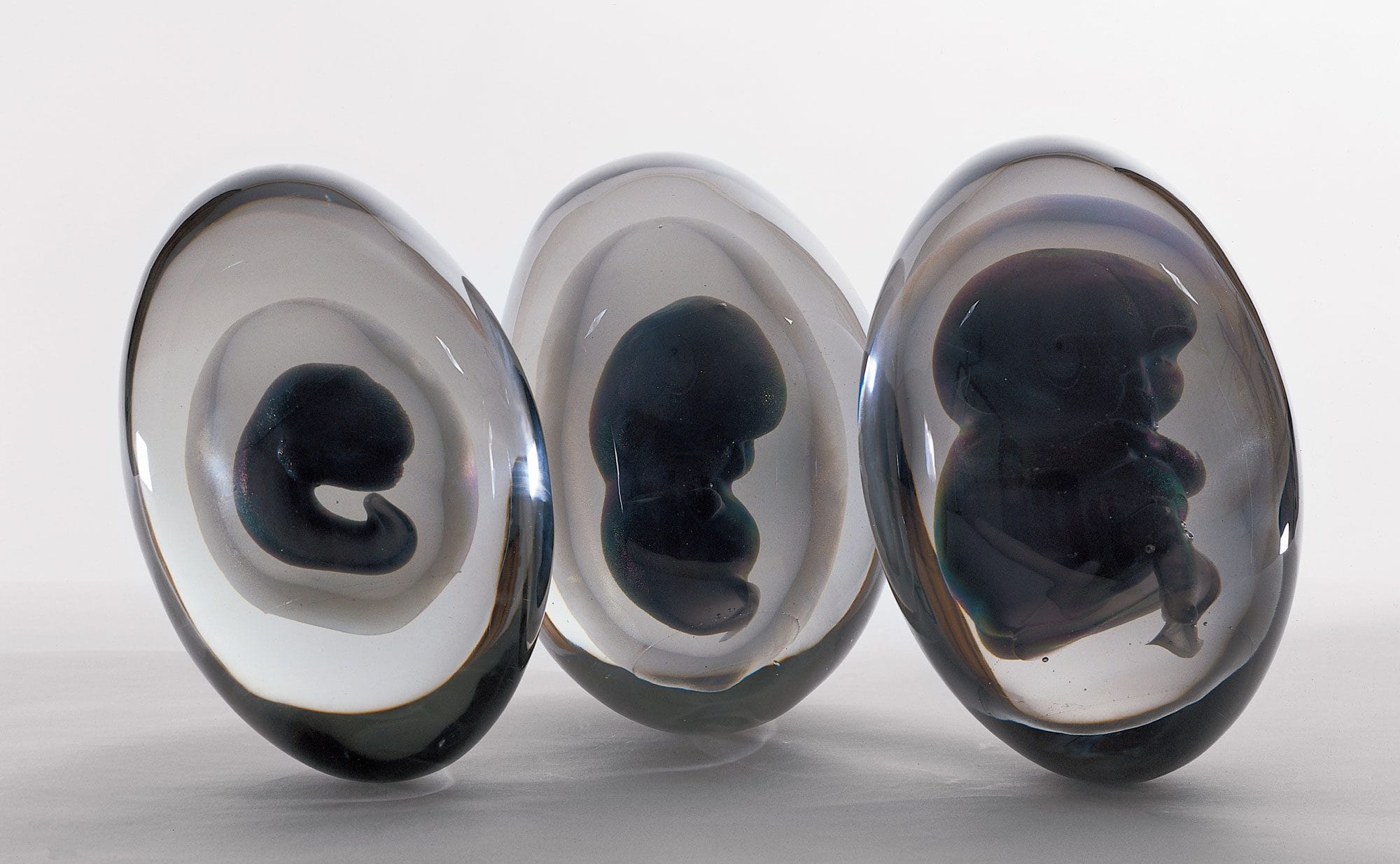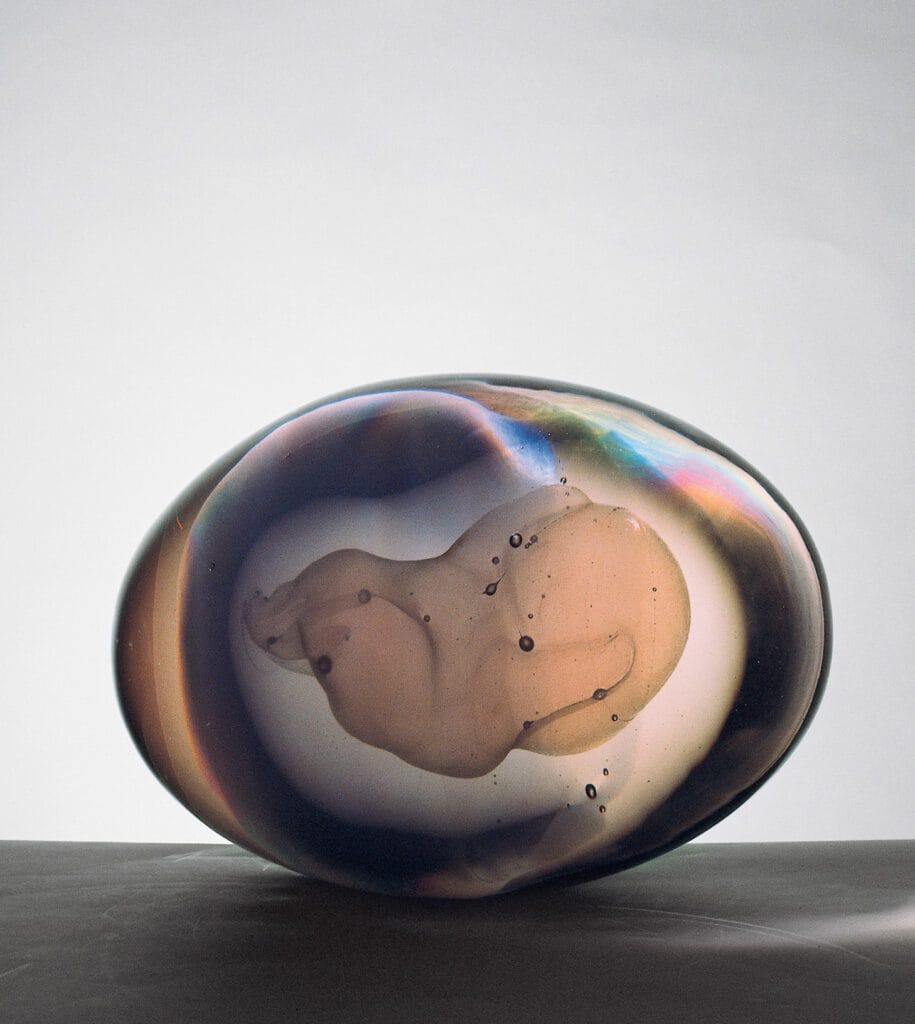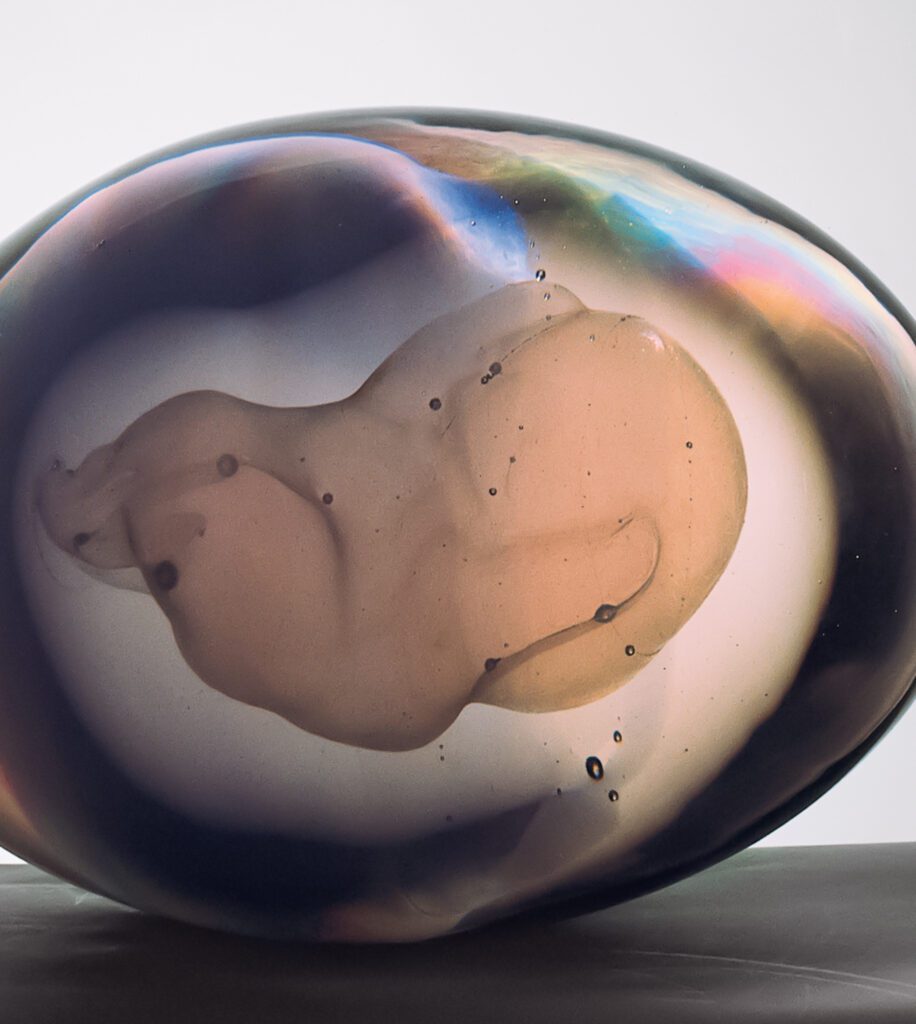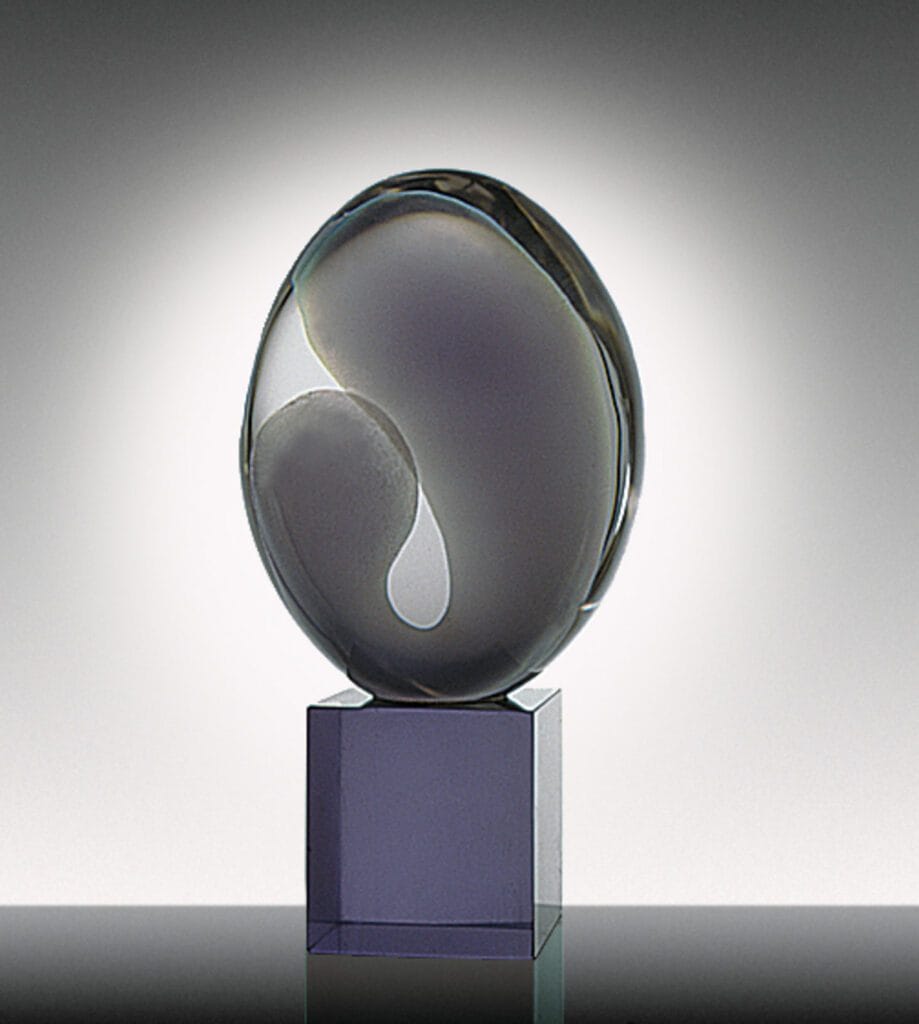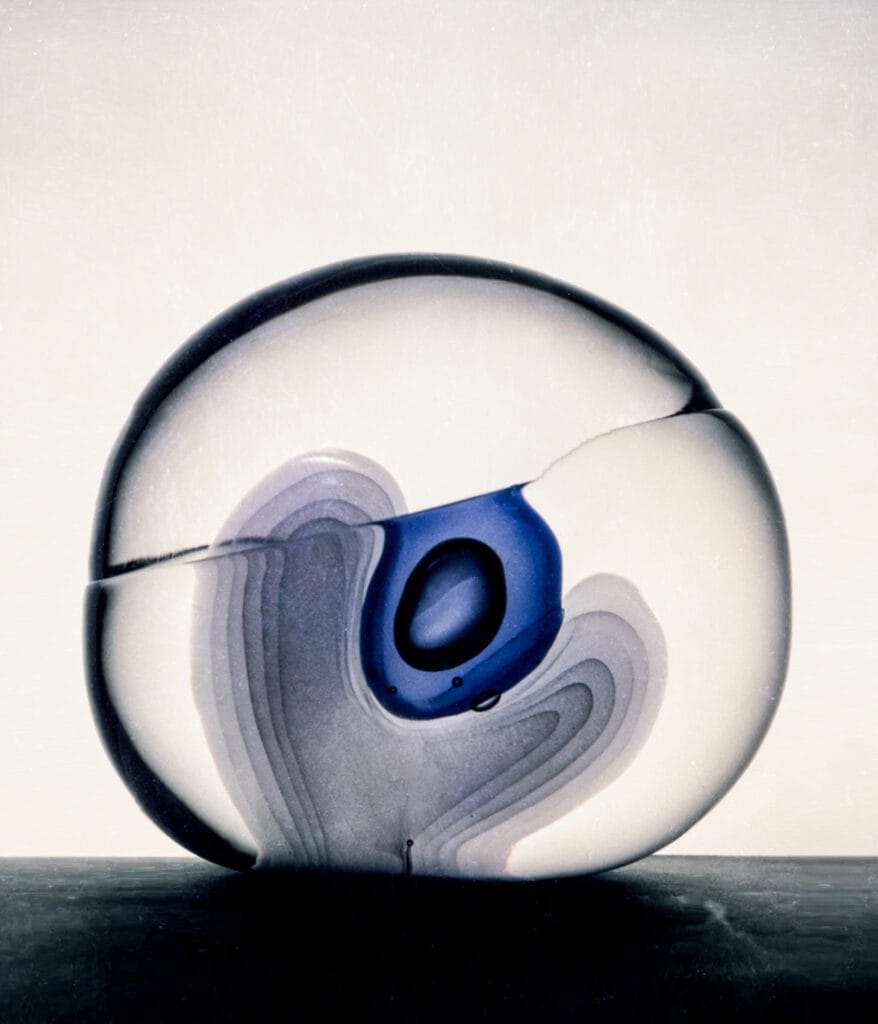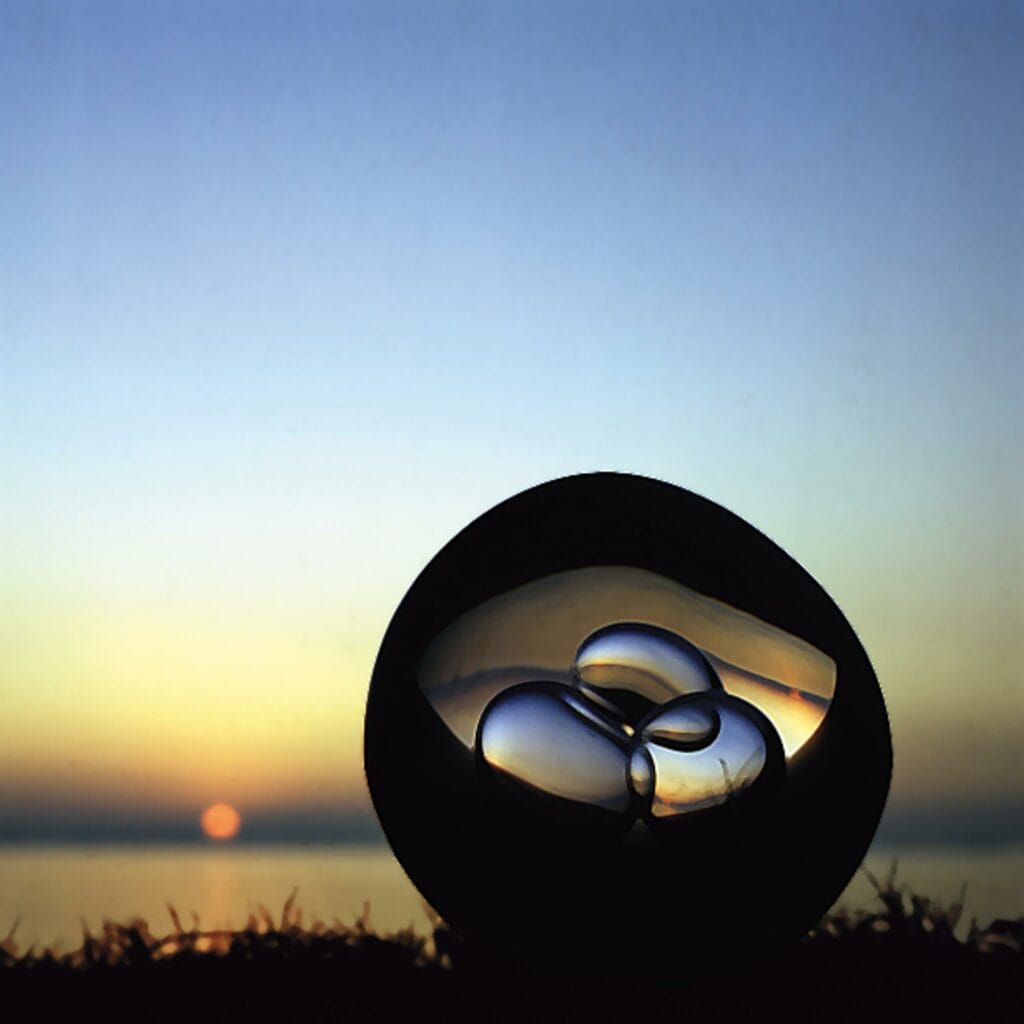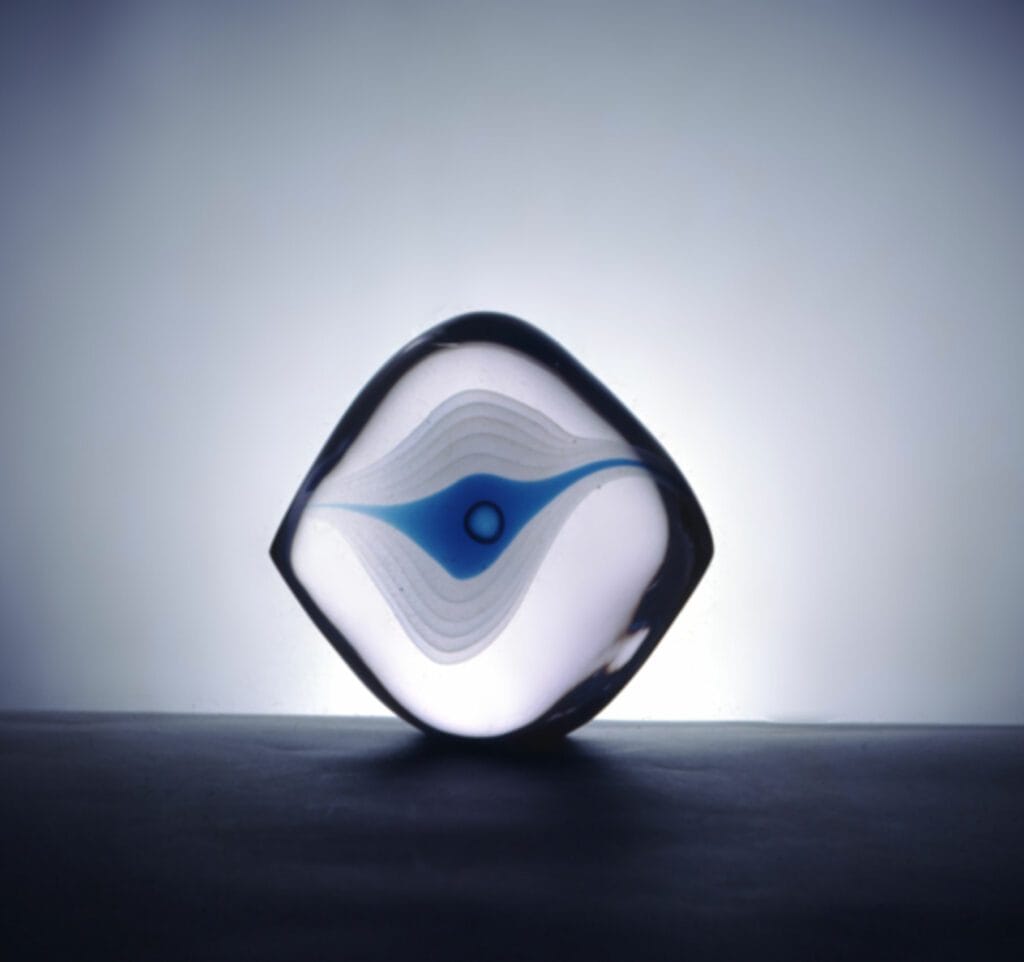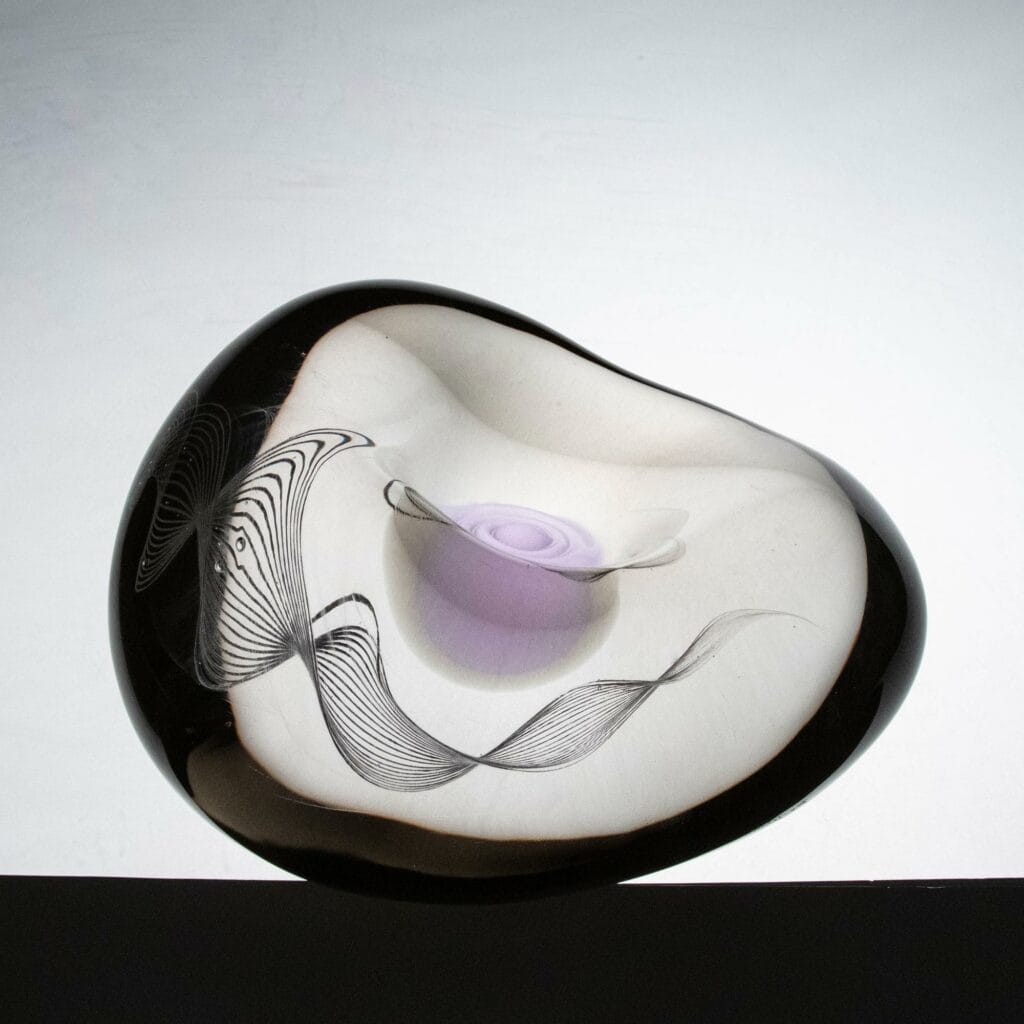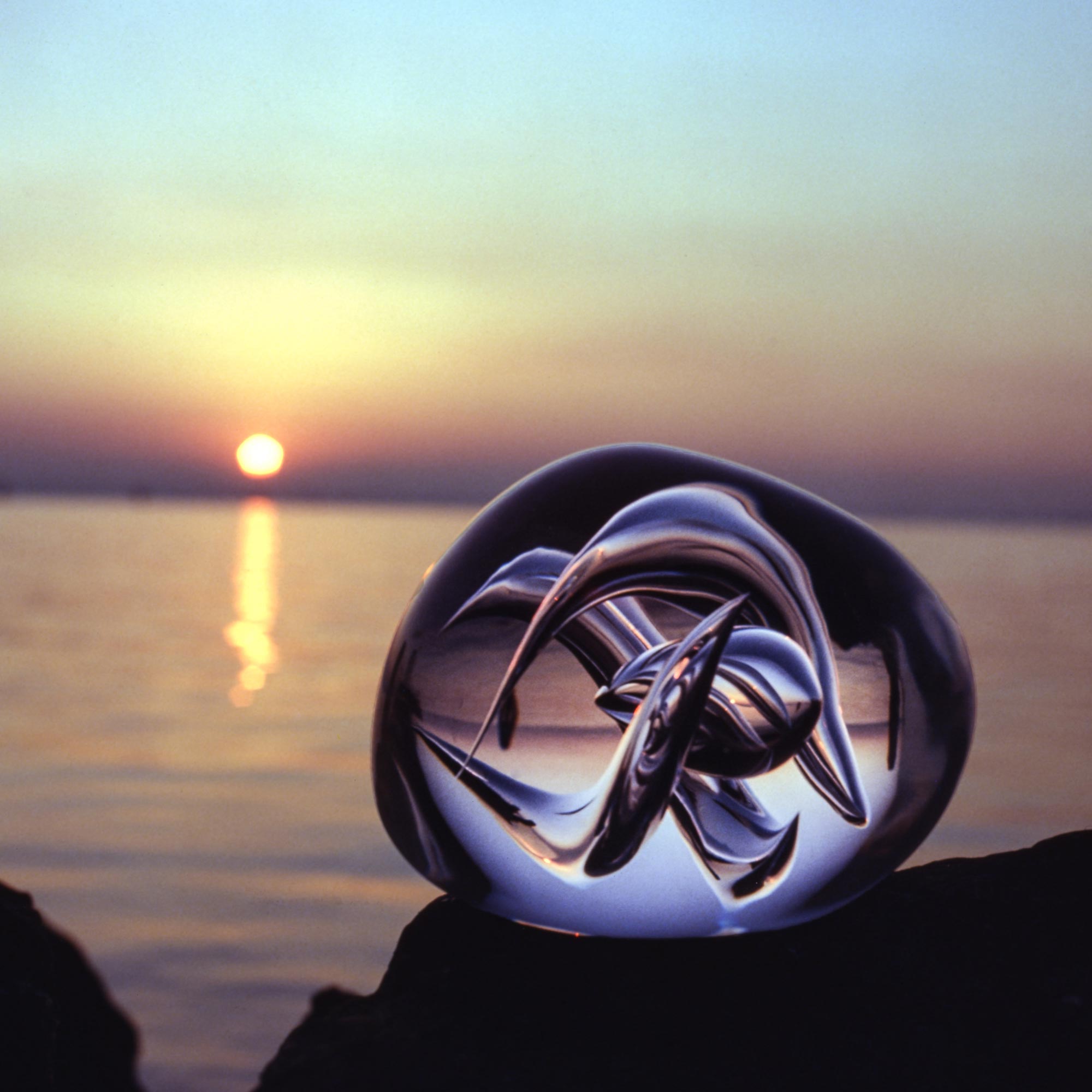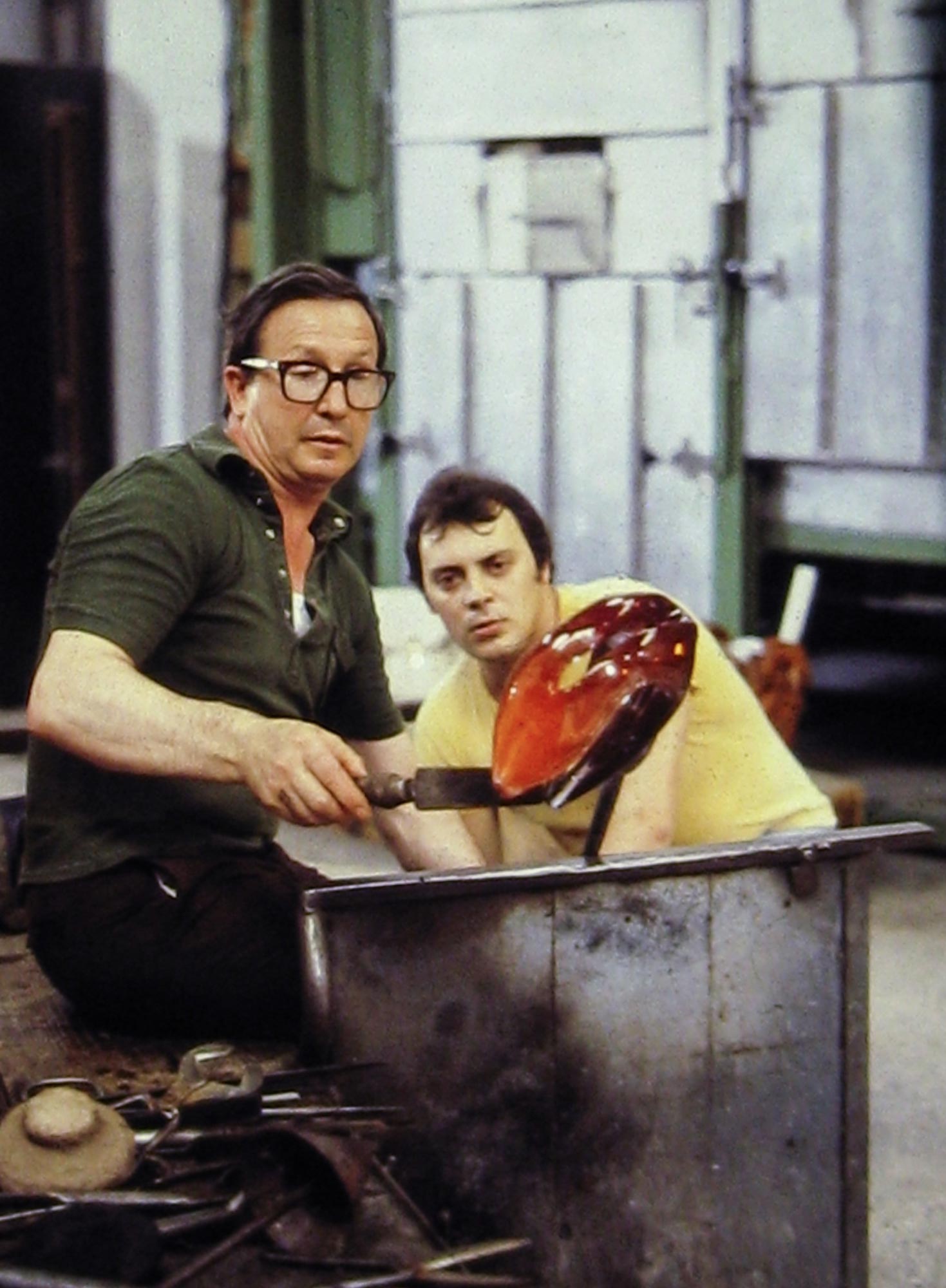In the heart of glass
In this period, a very important and significant turning point occurs. The artist is increasingly convinced of the role of light in relation to glass. After experimenting several times with its diffraction effects on his sculptural forms, he feels a new temptation that urges him to experiment with the permeability of light inside a transparent glass volume.
Genesi, 1974
Iridescent grey glass and clear glass, 60×37×32 cm
Nascita, 1978
Rosy and iridescent and clear glass, 29×20×20 cm
Embrione sommerso, 1974
Iridescent grey glass and clear glass, 35×19×19 cm
Embrione, 1976
Clear and bluish light grey glass, 29,5×26,5×24 cm
Nascita, 1978
Black and clear glass, 26×25×12 cm
Private collection
L’occhio, 1976
Clear and bluish light grey glass, 29,5×26,5×24 cm
Scherzo, 1976
Clear and bluish light grey glass, 29,5×26,5×24 cm
Momento magico, 1978
Clear glass, 27×24×23 cm
Private collection
Livio Seguso, 1975
…the glass sculpture is born with its own process and rises from the joy of the air. Air and water take shape together in a synthesis of light. One of the most exciting examples of this process is the sculpture by Livio Seguso, who, unlike the other sculptors, manages to measure the thickness of the glass light with a sense of transformation of the matter that takes away from the form just as much inertia as craftsmanship, even the most refined one, grants it. […] Seguso is a cultural artist. He pursues both ideological and stylistic research. He understands that techniques are used only to start a creative process that is always a new and unrepeatable relationship because the human reality of the person capable of creating poetry is renewed every time they experience the poetic moment.
Raffaele De Grada, art critic, Milan
